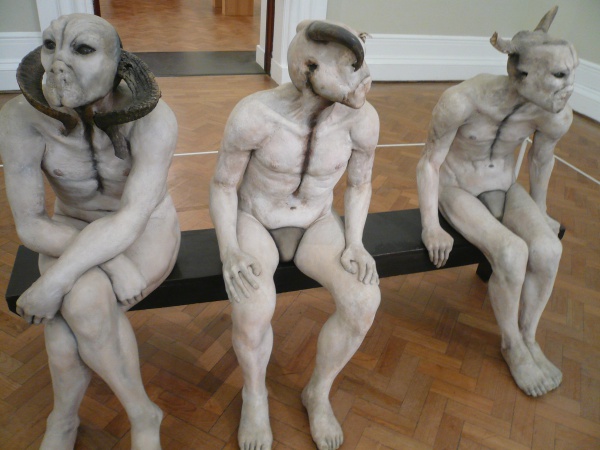Facts About The Butcher Boys
"Butcher Boys" is a compelling sculpture by South African artist Jane Alexander. It features three life-sized figures that appear almost human but possess unsettling, animalistic details such as horns and exposed bones. These figures are seated on a bench, creating a haunting tableau. Alexander created this work for her Master's degree and first exhibited it at the Market Theatre Gallery in Johannesburg in 1986. In 1991, the South African National Gallery acquired the sculpture.
The figures in "Butcher Boys" have powdery skin, black eyes, broken horns, and are devoid of mouths, symbolizing a loss of senses. This disturbing imagery comments on the harsh realities of postcolonial life and challenges notions about race. The sculpture was Alexander's response to the state of emergency in South Africa during the 1980s, a period marked by intense political strife and oppression.
In 2011, the South African band Die Antwoord used imagery from "Butcher Boys" in a teaser trailer for their album "Ten$Ion" without obtaining Alexander's permission. The band's members, Yolandi Visser and Ninja, appeared in makeup mimicking the figures from the sculpture. Alexander's lawyer raised concerns that this unauthorized use could mislead people about the artist's original message, which focused on the brutal impacts of apartheid. Following this controversy, the video was removed from distribution.
"Butcher Boys" remains a significant piece of art that explores profound themes of identity, dehumanization, and social critique. It continues to provoke thought and discussion, underscoring Jane Alexander's impactful commentary on society.

 Botswana
Botswana